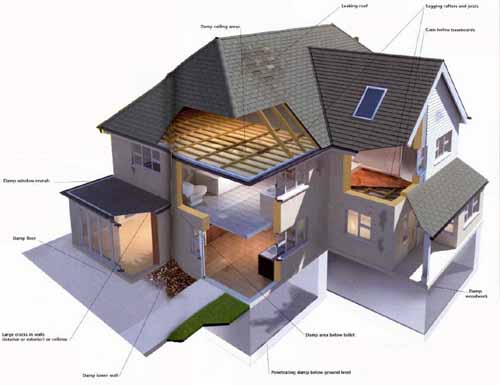In this section of this web site, all types of structural problems—those caused by moisture, rot, and infestation of varying kinds—are examined in detail. In most cases, relatively straightforward remedies are possible. However, initially it's a good idea to identify where problems are likely to occur and how you may recognize them. These are definitely things to know before the building inspector or home appraiser comes.
Identifying the Problem
Structural problems can be hard to recognize because they often remain hidden in the fabric of a house. Even if there is an obvious symptom, such as a crack in a wall, initially it can look the same whether it's due to harmless settlement or dangerous subsidence. Similarly, water intrusion caused by blocked gutters—which is easily remedied—may look like damage caused by a leaking roof. With structural problems, if you aren't sure of the cause, or if a problem persists after you have attempted to fix it, then seek advice. A professional will be able to make a correct diagnosis, inform you of the right course of action, and , if necessary, complete the required work to prevent future problems.
Click here or the image below for a comprehensive Structural Problems Exterior -- Plan View. This informative, interactive tool allows you to quickly evaluate the structural condition of your home.
Types of Rot
There are two types of rot: wet and dry. Wet rot is most common in the wood of window sills and door bases that have been exposed to damp conditions. Dry rot is more common in older properties. It starts in damp wood, usually in poorly ventilated areas, but can cause greater damage by spreading through a property moving across surfaces.
Early treatment of both types of rot is essential. In both cases, the original cause of dampness must be addressed, and the infected areas removed, but with dry rot you must also cut back into the sound material, to make sure that all traces are removed. Extensive dry rot should be treated by a certified firm that offers a guarantee of their work.
Problems with rot are generally the result of poor maintenance or poor ventilation. Therefore it's best to improve both of these aspects of your home to prevent the presence of rot in the first place.
